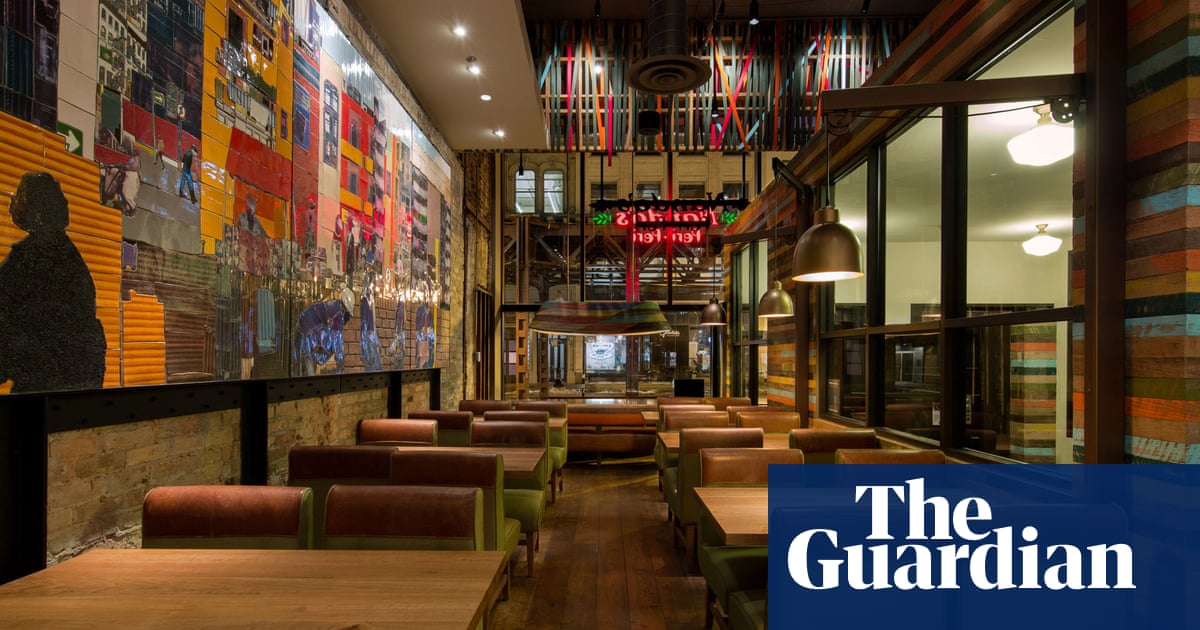On a weekday lunchtime the Nando’s restaurant in Maponya Mall in Soweto, the sprawling former Black township on Johannesburg’s outskirts, was busy with couples, white-collar workers and older women dining alone. Behind them, a vivid graffiti portrait of a young Black woman filled the wall.
The mural, by the Cape Town artistKilmany-Jo Liversage, is part of one of the largest private art collections in the world and, its curators believe, potentially the largest on public display.
Nando’s has been buying South African art to display in its peri-peri chicken restaurants globally since 2004, amassing a collection of about 32,000 pieces from 700 artists and becoming one of the country’s most significant supporters of visual artists.
“They’re like a parent to me,” said Liversage, who has created more than 10 murals for restaurants from Chicago to Dubai and sells one or two of her bright, spray-painted portraits of women to the company every few months.
The chain was founded in Johannesburg in 1987 by Fernando Duarte and Robbie Brozin. The idea to start buying art came from Dick Enthoven, an insurance magnate who bankrolled the international expansion andcame to own the chain.
Nando’s did not respond to questions, including whether the family of Enthoven, who died in 2022, still owns the private chain.
Mirna Wessels, the chief executive of Spier Arts Trust, a non-profit that sources pieces for the Enthovens’ private collection and businesses, said: “It was a little challenging in the beginning … a lot of those hardy chicken and chips guys just didn’t understand why they would now have to include fine art on the walls.
“But now I’m very comfortable and sure that it’s part of their DNA.”
Diana Hyslop, who started painting in the 1990s after a stint drawing for Marvel Comics in London, said Enthoven was one of the “visionaries” who had had the biggest impact on her career.
Hyslop, 75, who has sold about 250 of her magical realist works to Nando’s, said: “Dick bought a couple of pictures from the beginning … It’s been fantastic, very generous.”
Nando’s, which has more than 1,200 restaurants in more than 20 countries, also runs the “Creative Block” programme, giving artists 18cm or 30cm square wooden blocks to work on and providing personalised feedback. Then, three to four times a year in Cape Town, Johannesburg and Gqeberha, artists can submit work for the Spier Arts Trust to select and present in turn to Nando’s executives.
The company has a separate mentorship scheme for furniture and lighting designers. Over seven years, 70 designers had sold 65,000 pieces worth 200m rand (£8m) to Nando’s restaurants, said Tracy Lynch, executive creator director of Clout/SA, the business that manages the programme for Nando’s.
Wessels said Nando’s bought about 2,000 works a year from 280 different artists, but would not share how much was spent, or the collection’s value.
Tamlin Blake, the Spier Art Trust’s chief curator and a tapestry artist, said that in order to be considered for purchase, artworks had to be family-friendly, about 1 metre by 1.5 metres, and not behind glass. “I do believe if the work is authentic and has something to say and is beautifully made, there will be a space for it somewhere,” she said.
Kagiso Patrick Mautloa, 73, who creates everything from sculptures to mixed-media pieces, said the relationship gave him freedom: “I put more of myself into the work.”
Wessels said relationships were key: “We just continuously run our career development programme, where artists are introduced to us. Tamlin will review and decide if an artist is serious about building an art career and has something unique to bring to table.”
Anastasia Pather, who fingerpaints bright abstract pieces at her home studio in Johannesburg, said Nando’s had been buying her work since she first started exhibiting.
The 37-year-old, who was part of a Nando’s exhibition in Dallas, Atlanta and now New Orleans, said: “If you have some assurance that there is a more consistent patron of your work, you can take a few more risks in your pieces … I just wouldn’t be able to be a full-time artist.”
Vivien Kohler, whose works include everyday “found” objects such as street signs, said the art world’s elitism had initially shocked him: “I hated that. So my MO from then on was always accessibility … to allow the ordinary viewer to appreciate art. So for me, it’s brilliant, it’s perfect.”
